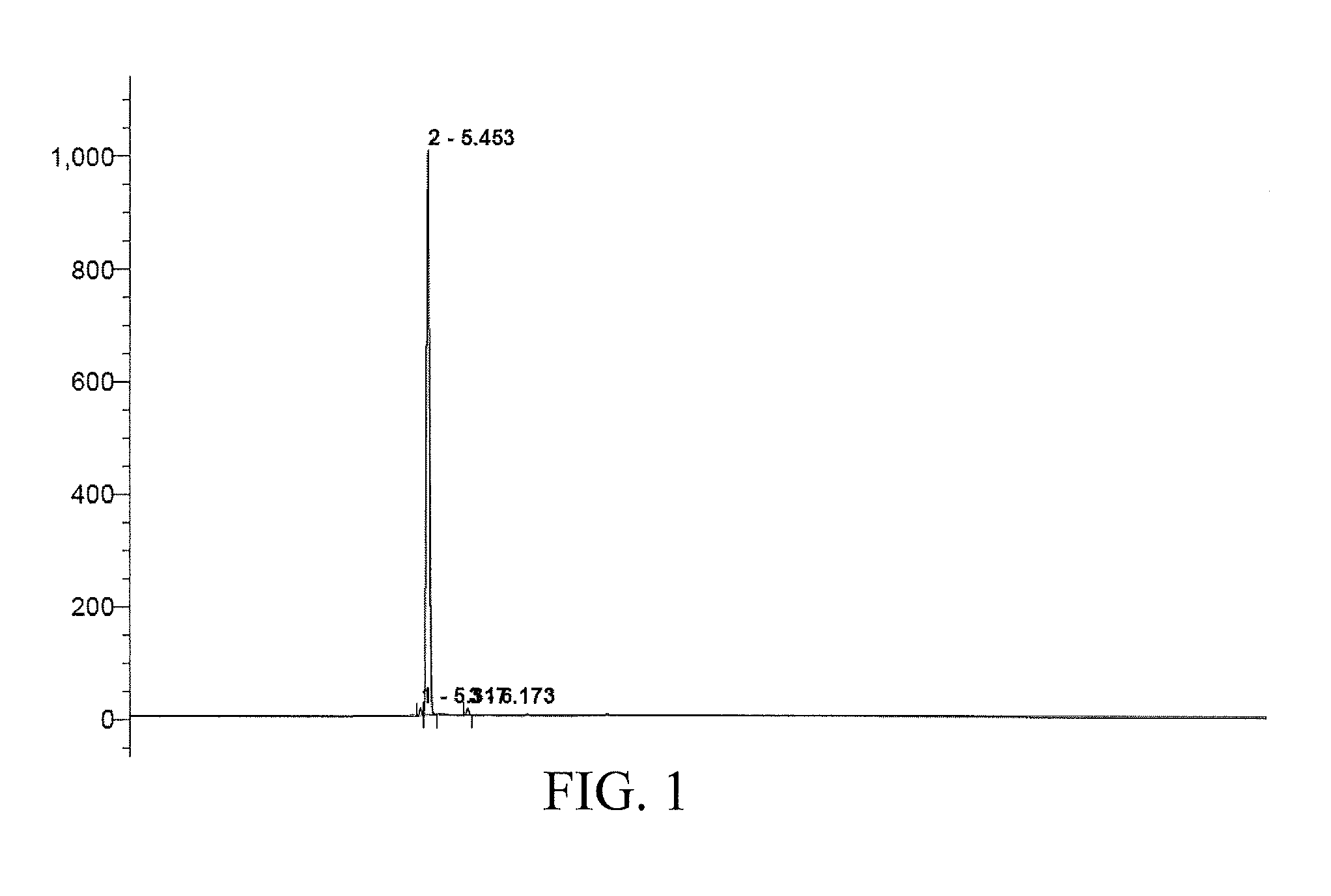Process for preparing and separating monodisperse polyethylene glycol
a polyethylene glycol and monodisperse technology, applied in the field of biomaterials, life science and medicines, can solve the problems of high requirements for purity of reagents and solvents, no separation method nor directly used for drug modification, and high requirements for reagents and solvents. high, simple process, and wide source
- Summary
- Abstract
- Description
- Claims
- Application Information
AI Technical Summary
Benefits of technology
Problems solved by technology
Method used
Image
Examples
embodiment 1
[0032]40 g (0.1 mol) of polyethylene glycol PEG-400 was taken as a starting material, which has a molecular weight distribution range of 380 to 420 and a distribution index of 1.15. The polyethylene glycol was dissolved in 1,000 ml of 1,4-dioxane and cooled to 0° C. Then, to the resulting solution, 2 g (0.025 mol) of 50% (mass percentage content, the same below) sodium hydroxide solution was added dropwise and further stirred for 2 h. 2.3 g (0.025 mol) of isobutyl chloride was then added for reaction at a temperature of 0° C. over 24 h. 300 ml of saturated ammonium chloride solution was added to the reaction liquid and then stirred for stratification. An organic phase was washed with saturated aqueous solution of sodium chloride to neutral, and after the solvent was removed by means of vacuum concentration, a mixed sample of 8.0 g of polyethylene glycol mono(isobutyl) ester was obtained. To the above sample, 12 g of silica gel and 50 ml of ethyl acetate were added, evenly dispersed ...
embodiment 2
[0033]50 g (0.25 mol) of polyethylene glycol PEG-200 was taken as a starting material and dissolved in 1,000 ml of tetrahydrofuran. Then, to the resulting solution, 10 g (0.125 mol) of 50% sodium hydroxide solution was added dropwise and further stirred for 2 h. 7 g (0.025 mol) of triphenylmethyl chloride was then added for reaction at a temperature of 20° C. over 12 h. 300 ml of saturated ammonium chloride solution was added into the reaction liquid and stirred for stratification. The organic phase was washed with saturated aqueous solution of sodium chloride to neutral. After the solvent was removed by means of vacuum concentration, a mixed sample of 9.5 g of polyethylene glycol mono(triphenylmethyl) ester and polyethylene glycol bis(triphenylmethyl) ester was obtained. To the above sample, 12 g of silica gel and 50 ml of ethyl acetate were added, evenly dispersed and dried to prepare a silica gel sample. 200 g of silica gel was added into a glass chromatography column with a diam...
embodiment 3
[0034]300 g (0.50 mol) of polyethylene glycol PEG-600 was taken as a starting material and dissolved in 1,000 ml of tetrahydrofuran. Then, to the resulting solution, 1.8 g (0.075 mol) of sodium hydride solution was added in portions and further stirred for 2 h. 4.6 g (0.025 mol) of 4-methylbenzyl bromide was then added for reaction at a temperature of 0° C. over 72 h. 300 ml of saturated ammonium chloride solution was added into the reaction liquid and stirred for stratification. The organic phase was washed with saturated aqueous solution of sodium chloride to neutral. After the solvent was removed by means of vacuum concentration, a mixed sample of 7.2 g of polyethylene glycol mono(4-methylbenzyl) ester was obtained. To the above sample, 12 g of silica gel and 50 ml of ethyl acetate were added, evenly dispersed and dried to prepare a silica gel sample. 200 g of silica gel was added into a glass chromatography column with a diameter of 80 mm, and vibrated to become dense. Then, the...
PUM
| Property | Measurement | Unit |
|---|---|---|
| polydispersity index | aaaaa | aaaaa |
| polydispersity index | aaaaa | aaaaa |
| temperature | aaaaa | aaaaa |
Abstract
Description
Claims
Application Information
 Login to View More
Login to View More - R&D
- Intellectual Property
- Life Sciences
- Materials
- Tech Scout
- Unparalleled Data Quality
- Higher Quality Content
- 60% Fewer Hallucinations
Browse by: Latest US Patents, China's latest patents, Technical Efficacy Thesaurus, Application Domain, Technology Topic, Popular Technical Reports.
© 2025 PatSnap. All rights reserved.Legal|Privacy policy|Modern Slavery Act Transparency Statement|Sitemap|About US| Contact US: help@patsnap.com



